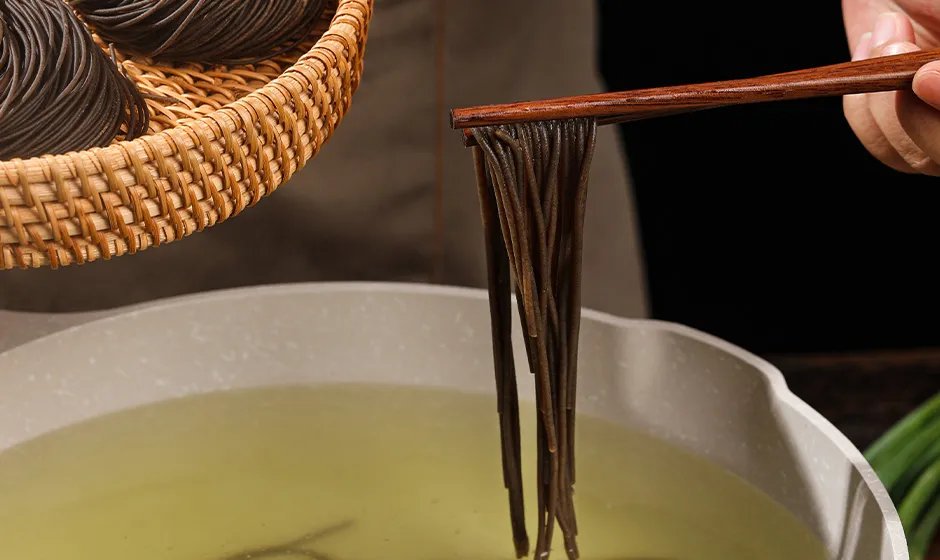Exploring the Key Differences Between Udon and Soba Noodles in Japanese Cuisine
Understanding the Differences Between Udon and Soba
Japanese cuisine is renowned worldwide for its unique flavors and diverse noodle dishes, with udon and soba being two of the most popular types. Both of these noodles have rich histories and are enjoyed in various culinary contexts, yet they possess distinct characteristics that set them apart. This article will explore the differences between udon and soba, highlighting their ingredients, preparation methods, nutritional values, and cultural significance.
Ingredients and Composition
The primary difference between udon and soba lies in their ingredients. Udon noodles are made primarily from wheat flour, water, and salt. This results in a thick, chewy noodle with a smooth texture, which can often be found served in hot broth or stir-fried with various ingredients. The wheat flour provides a comforting and hearty noodle experience, making it a popular choice in colder weather or for a hearty meal.
In contrast, soba noodles are primarily made from buckwheat flour, which gives them a nutty flavor and a darker color. While some soba noodles are made purely from buckwheat, many contain a small percentage of wheat flour to improve their texture and elasticity. This results in a thinner, somewhat firmer noodle compared to udon, with a distinct taste that pairs well with lighter broths and cold dishes.
Preparation Methods
The preparation and cooking methods for udon and soba also differ. Udon is typically boiled in water and can take longer to cook compared to soba. Once cooked, it is often served in a rich broth made with dashi, soy sauce, and mirin, topped with ingredients like green onions, tempura, and nori. Udon is also popular in stir-fried dishes, where the noodles are tossed with vegetables, proteins, and savory sauces.
Soba, on the other hand, can be served cold or hot. Cold soba is a popular summer dish, typically accompanied by a dipping sauce called tsuyu, made from soy sauce, mirin, and dashi. Diners dip the soba noodles into the sauce before eating. When served hot, soba is commonly placed in a bowl of hot broth, similar to udon, but the broth is often lighter and flavored with ingredients like soy and mirin. The contrasting serving styles showcase the versatility of soba, making it suitable for various occasions.
what is the difference between udon and soba

Nutritional Values
From a nutritional standpoint, soba is often considered the healthier option due to its buckwheat content. Buckwheat is a whole grain that is gluten-free and rich in fiber, vitamins, and minerals. It is also known for containing antioxidants and has been linked to various health benefits, including improved heart health and better blood sugar control.
Udon, made primarily from refined wheat flour, is higher in calories and carbohydrates compared to soba. While it can provide energy and comfort in meals, it lacks the nutritional benefits associated with buckwheat. However, udon can still be part of a balanced diet when consumed in moderation and paired with healthy toppings, such as vegetables and proteins.
Cultural Significance
Both udon and soba have significant cultural importance in Japan. Udon is often associated with comfort food, traditionally enjoyed in households during the colder months or for festive occasions. Different regions of Japan also have their own versions of udon, such as Sanuki udon from Kagawa Prefecture, which is characterized by its firm texture.
Soba, on the other hand, has deep roots in Japanese culture and is often linked to celebration and prosperity. It is traditionally consumed on New Year’s Eve in the form of toshikoshi soba, symbolizing a farewell to the old year and a wish for longevity and prosperity in the new year. The practice of eating soba reflects the deep reverence the Japanese have for seasonal ingredients and traditional customs.
Conclusion
In summary, while udon and soba both play vital roles in Japanese cuisine, they are distinct in terms of ingredients, preparation, nutritional values, and cultural significance. Udon, with its thick, chewy wheat noodles, offers comfort and heartiness, while soba, with its nutty buckwheat flavor, provides a lighter, more versatile dining experience. Whether you prefer the comforting familiarity of udon or the health benefits and unique taste of soba, both noodles are delicious representations of Japan’s rich culinary heritage.
-
Unleash Your Inner Chef with Delectable Italian Pasta CreationsNewsAug.01,2025
-
Savor Health and Flavor: Irresistible Soba Noodles for Sale Await!NewsAug.01,2025
-
Nourish Your Body with Premium Organic Ramen - A Culinary Delight AwaitsNewsAug.01,2025
-
Elevate Your Dishes with Our Exquisite Kinds of Egg NoodlesNewsAug.01,2025
-
Dive into Flavorful Convenience with Our Ramen OfferingsNewsAug.01,2025
-
Discover Exquisite Types of Naengmyeon and Chilled Soba NoodlesNewsAug.01,2025
-
Is Whole Wheat Pasta Healthy?NewsMay.30,2025
Browse qua the following product new the we

















































































































